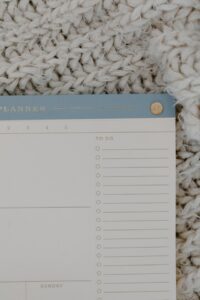As you know, Medicare Part D covers prescription drugs. Part D isn’t mandatory. Whether you need it — even if you don’t take any drugs — depends on your life situation. Nevertheless, it’s useful to understand how prescription drug plans (PDP) work.
The cost of your covered drugs can change throughout the year. If you see that prices have changed, it might be because you’re in a different stage of Part D coverage. Here’s more about the phases of Part D coverage.
PDP Plans – Coverage Phases
Stage 1: Annual Deductible — You Pay 100%
Stage 1 occurs at the beginning of your Part D coverage. During this period, you pay for your prescription drugs — in full — until you reach your annual deductible amount.
The deductible is the amount you pay of your medication expenses before your plan pays its portion. After you meet the deductible, you transition into the initial coverage stage. Some plans don’t have an annual deductible. Under these plans, you’d begin in stage 2.
Stage 2: Initial Coverage — Shared Cost with Insurance Carrier
During this stage, you’re normally responsible for copays and coinsurance (a percentage of the drug’s cost) when you get a prescription filled. Both you and your plan pay medication costs until the shared total drug costs reach $4,020 — in 2020. At this time, you move into stage 3.
Stage 3: Coverage Gap (Donut Hole)
In 2020, the coverage gap starts after you and your plan have spent $4,020 for covered drugs. It ends when your out-of-pocket cost hits $6,350 for them. During this gap in coverage, you may pay more for your medications.
Also, in this stage:
- You pay a maximum of 25% of the plan’s cost of brand-name drugs.
- You pay a maximum of 25% of the cost of generic drugs. The plan pays the rest!
- Any medication-related deductible, discounts you get on covered brand-name drugs, coinsurance, copayments, and the amounts you pay in the coverage gap contribute to the $6,350 cap.
Stage 4: Catastrophic Coverage — Follows the Coverage Gap
Stage 4 begins when you hit the $6,350 coverage gap limit (in 2020). Here, you’ll start paying a different coinsurance or copay for both generic and brand-name prescriptions. Copays are usually lower in stage 4 than they are in stage 2. You stay in this stage until the end of the plan year.
Note: During catastrophic coverage, you’ll pay 5% of the cost for each of your medications or $3.60 for generics and $8.95 for brand-name drugs — whichever is greater.
Related Post: What Is a Formulary & Why Is it Important?
What Else Should I Know?
Many Part D plans use rules and restrictions to help control costs and maintain patient safety. Keep this in mind when you compare plans.
Prior Authorization
Some PDP plans require approval before a specific drug is covered. For some prescription drugs, extra coverage requirements may be implemented to make sure members use them safely — while also controlling the costs for each person. To get prior approval, you and/or your doctor should submit a prior authorization request.
Related Post: Prescription Drug Tiers
Get Help with Medicare Part D
Depending on where you live, there could be 40+ prescription drug plans in the area. You need to make sure you choose the right plan that includes your prescriptions. At Trusted Senior Specialists, we specialize in standalone Part D plans. We’ll make sure you have the best plan — with the most savings — that fits your health situation. Contact us online or call (855) 952-1941!







